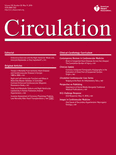Bohm P, Schneider G, Linneweber L, Rentzsch A, Krämer N, Abdul-Khaliq H, Kindermann W, Meyer T, Scharhag J.
BACKGROUND: It is under debate whether the cumulative effects of intensive endurance exercise induce chronic cardiac damage, mainly involving the right heart. The aim of this study was to examine the cardiac structure and function in long-term elite master endurance athletes with special focus on the right ventricle by contrast-enhanced cardiovascular magnetic resonance.
METHODS AND RESULTS: Thirty-three healthy white competitive elite male master endurance athletes (age range, 30–60 years) with a training history of 29±8 years, and 33 white control subjects pair-matched for age, height, and weight underwent cardiopulmonary exercise testing, echocardiography including tissue-Doppler imaging and speckle tracking, and cardiovascular magnetic resonance. Indexed left ventricular mass and right ventricular mass (left ventricular mass/body surface area, 96±13 and 62±10 g/m2 ; P<0.001; right ventricular mass/body surface area, 36±7 and 24±5 g/m2 ; P<0.001) and indexed left ventricular end-diastolic volume and right ventricular end-diastolic volume (left ventricular end-diastolic volume/body surface area, 104±13 and 69±18 mL/m2 ; P<0.001; right ventricular end-diastolic volume/body surface area, 110±22 and 66±16 mL/m2 ; P<0.001) were significantly increased in athletes in comparison with control subjects. Right ventricular ejection fraction did not differ between athletes and control subjects (52±8 and 54±6%; P=0.26). Pathological late enhancement was detected in 1 athlete. No correlations were found for left ventricular and right ventricular volumes and ejection fraction with N-terminal pro-brain natriuretic peptide, and high-sensitive troponin was negative in all subjects.
CONCLUSIONS: Based on our results, chronic right ventricular damage in elite endurance master athletes with lifelong high training volumes seems to be unlikely. Thus, the hypothesis of an exercise-induced arrhythmogenic right ventricular cardiomyopathy has to be questioned.
Article in PDF (for private use only)



